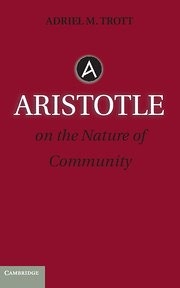Using Kahoot! in the College Classroom

Last semester, when I had only heard of coronavirus in a conversation with a senior biology major reporting on some developments of novel viruses around the world, I began the semester using Kahoots in all three of the courses I was teaching: an early modern survey, a philosophy of race course, and a seminar on the work of Hannah Arendt. Kahoot is a quiz / game application faculty can use to track student understanding and engage students in the in-person or virtual classroom. When I was using it in person, Kahoot! was a fun way to review material and to jog students’ memories about the current day’s reading. I would purposefully include in the multiple-choice wrong answers that represented typical misunderstandings of a position under discussion so that we could put it on the table to consider without anyone feeling called out for saying the wrong thing (the answers are anonymous, so you don’t see who answered which answer). In this way, it helped me organize the class meeting and remember to address possible confusions.
When we went online, it was a great way to keep students whose faces I often could not see engaged and focused throughout the class meeting. In both scenarios, my students got into it and I’m using it again this semester to good effect when I’m back and forth between in-person and virtual class meetings.
How it works:
- The instructor makes a quiz with a series of questions of several different types and then students “play” the Kahoot! in class either by projecting the website or sharing through video conference.
- Students download app to their phones or pads or access through the website: kahoot.it.
- Students enter the number that appears when the kahoot1 is introduced.
- Each students adds their name or nickname in order to enter the Kahoot!
- Students are given a set amount of time (which instructor can adjust) to answer a question. At the end of the time limit, the distribution of answers shows up with the correct answer marked with a check.
- Questions in one Kahoot! are posed across one class meeting.
- At the end of the Kahoot! a “podium” appears with the third, second and first place finishers in the class being announced.
How-to video
Benefits:
- Gives the instructor and students immediate feedback on whether the students understand material.
- Can be used in face-to-face class meetings or virtual meetings.
- Can be used to review or introduce material.
- Keeps students engaged and active in lecture-based courses while also giving the instructor the opportunity to engage with students.
- Can be used to prompt discussion, especially with the word cloud and poll questions (these are available with the Premium version).
- Students may enjoy the competitive nature of the game, especially the race to win the podium. But you can also ignore or never show the podium to reduce the competitive vibe.
- Instructors can track how well students did through reports. Students can retake or make up the Kahoot! if someone is hosting the game. I post all Kahoots on a Canvas page after class for them to do on their own.
- Students can be given credit for engaging in class (complete or incomplete rather than a grade for correct or incorrect answers works to allow students to make mistakes and benefit from them).
Types of questions
Included in the free Kahoot version:
- Quiz: multiple choice question – present question and answers
- True / False: Present a statement which students then mark as true or false.
Included in Premium Kahoot version:
- Open-ended questions: faculty write question and enter the correct answer. Students offer an answer that is supposed to match whatever the faculty member has entered.
- Puzzle: faculty offer a question or assignment involving a proper order of answers that students need to arrange.
- Poll: faculty enter statement or question with answers or views and the results are offered by percentage
- Word cloud: open-ended question that does not have a prescribed correct answer.
Students can be given this plug-and-play handout to get started with Kahoot!




